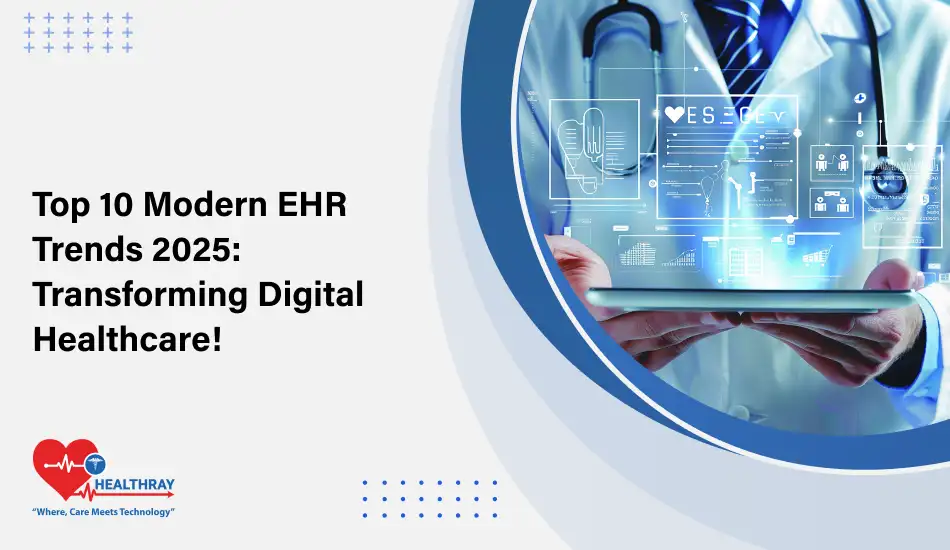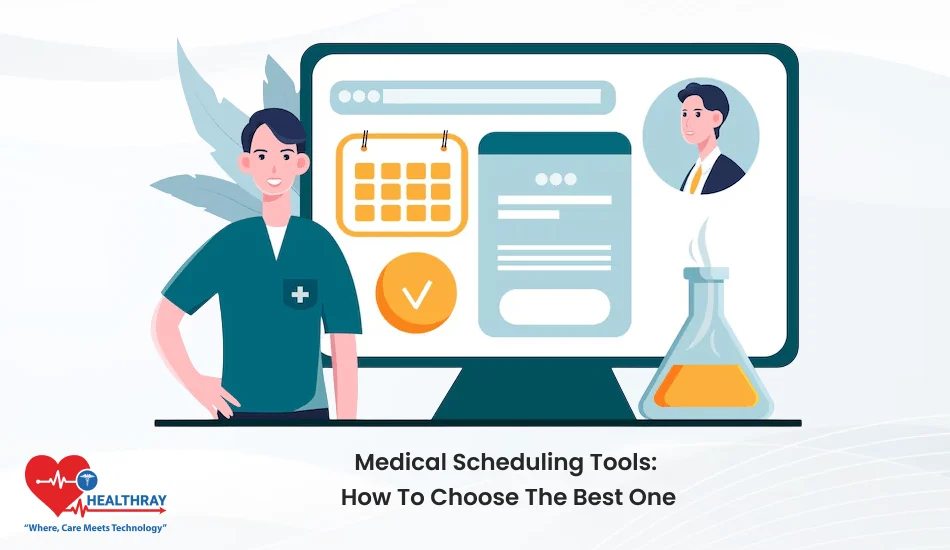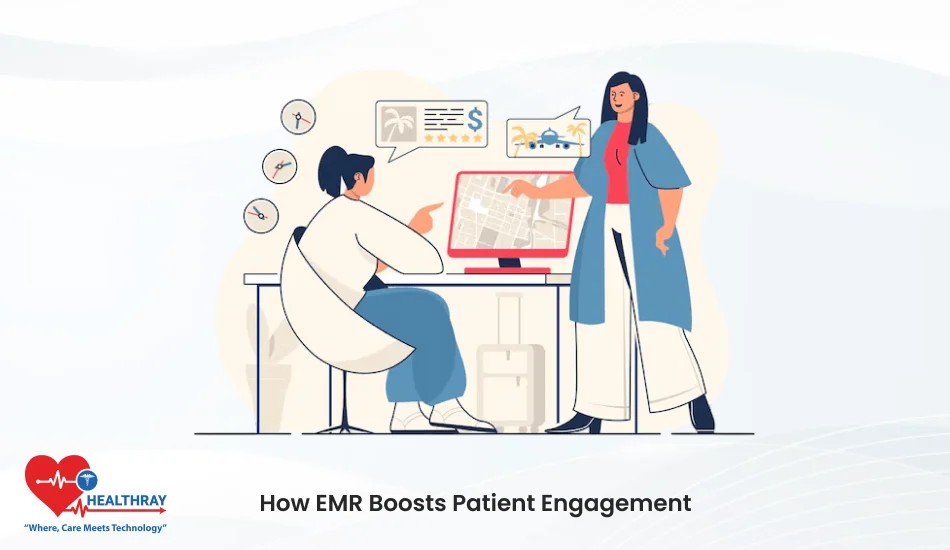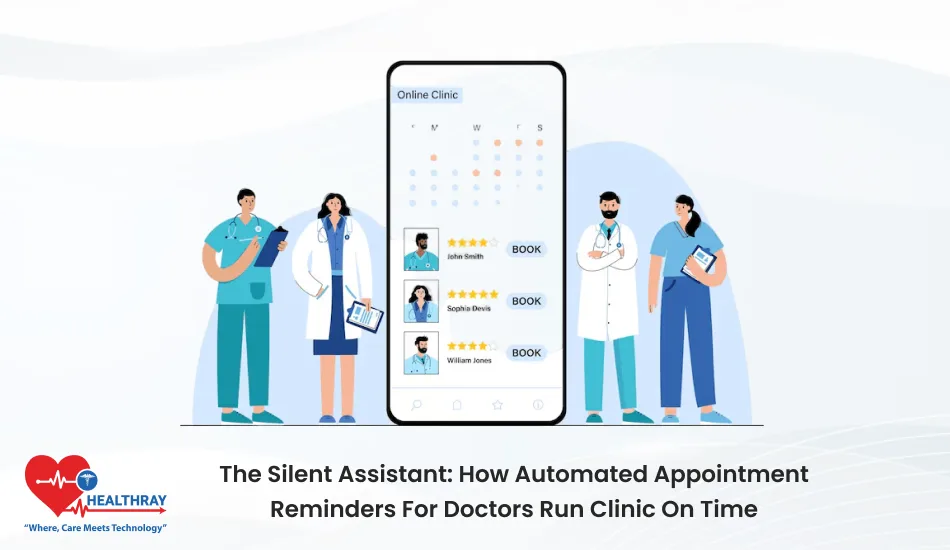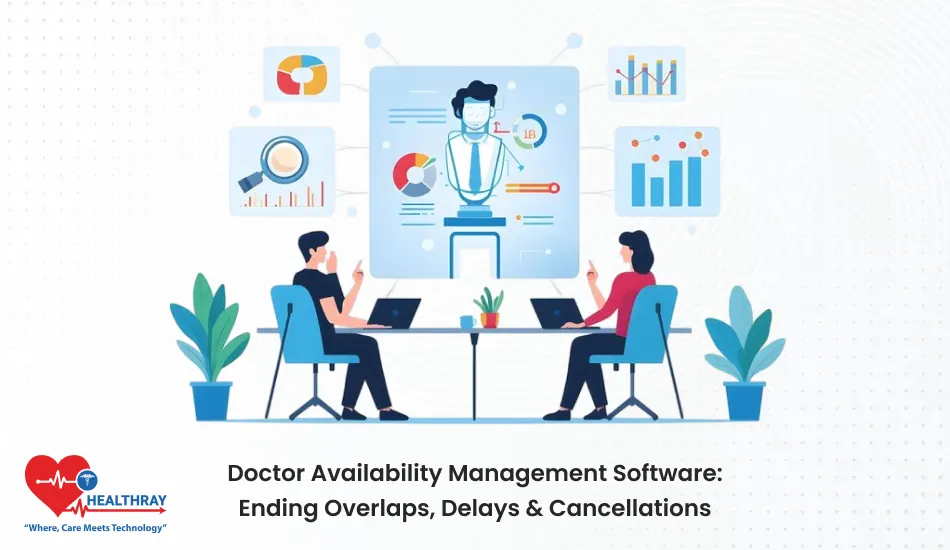Summary
The modern EHR trends 2025 are transforming healthcare into a faster, smarter and more connected system. Everything from AI-powered decision-making to cloud-based EHR systems enhance care and reduce mistakes. Hospitals have implemented digital records, predictive analytics, and portals that patients own that promote transparency.
Even EHR systems for mental health providers are growing more personal and data-driven. These trends exemplify how technology translates information into life-saving action. The future of healthcare is not keeping data, but using it to care more, act sooner and replace the patient’s trust.
Introduction
Data is how the world runs now. And the modern EHR trends 2025 are leading the way towards a redefinition of healthcare.
Current electronic health record systems also serve other functions rather than just storing information. They anticipate risks, support the doctors, and connect patients to a higher level of care.
Here’s a fun fact – 71% of US hospitals now have predictive AI incorporated into their EHRs. This is up from 66% last year. That demonstrates how quickly EHR Software becomes “smarter”.
Picture walking into a clinic and your doctor already perceives health trends about you without you saying a word. Imagine labs, pharmacies, and specialists all linked through one system. That’s not a fantasy. That’s exactly where modern EHR trends 2025 are taking us.
In this blog post, we will consider how these trends are transforming the experience of healthcare. What impact to the work of physicians do they have? What do they mean in terms of healthcare privacy, efficiency, and speed? So, let’s understand how EHR, electronic health record systems, and new tech are working together this year.
Top 10 Modern EHR Trends 2025: Redefining Healthcare in the Digital Era!
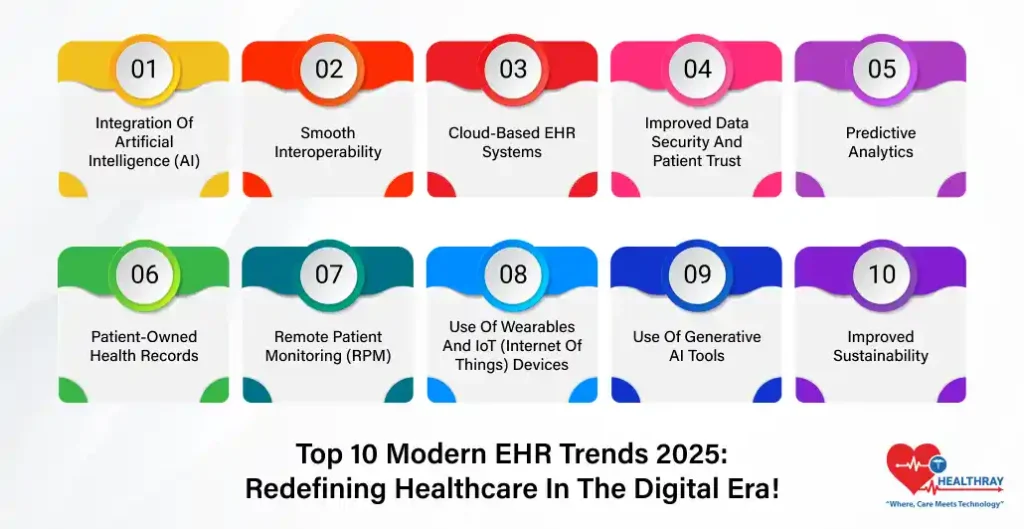
The entire healthcare technology is changing rapidly, and modern EHR trends 2025 are at the forefront of the change.
Integration of Artificial Intelligence (AI)
AI is now integral to the functioning of EHR systems. Hospitals employ AI-based clinical decision support to assist physicians. Risk assessment tools are used to determine health risks at an early stage. Physicians are able to quickly update patient records via voice recognition capabilities.
Moreover, AI assistants are employed in documentation at many clinics. These tools allow summaries of patient visits in a matter of seconds. They also look for gaps in information and recommend lines of treatment. AI video tools can further turn these summaries into short, personalized explainer videos for patients. This translates into quicker workflows and fewer mistakes. In addition, AI can provide customised care, tailored recommendations according to the specific patient.
AI also finds a role in EHR systems for mental health providers, which monitor patients’ progress and recommend treatment plans. These advancements help to enhance and render more intelligent and reliable use of AI in EHR systems.
Smooth Interoperability
The most significant of these, in terms of modern EHR trends 2025, is interoperability. The sharing of information between hospitals, labs and pharmacies has also become easier.
Via seamless interoperability, the patient can have access to his or her electronic patient record at any time. Medical histories and test results are also available instantly to clinicians. This kind of continuous access minimises the need for repeated tests and increases the speed of the care.
Providers integrate their digital health records with other external systems as well. In addition, it assists in aligning care at multiple sites. Interoperability ensures that EHR softwares are able to communicate with one another and that, in the process, there are no gaps in data.
Cloud-Based EHR Systems
Cloud technology re-envisions electronic health record systems. Cloud-hosted EHRs are more secure, as well as flexible and scalable. Clinics do not need to install new hardware to increase storage.
Incorporating telehealth makes it possible for doctors to meet with patients virtually. Records are available from anywhere, including on mobile devices. Cloud computing is being used by smaller clinics to reduce IT expenditure.
Cloud-based EHRs enable collaboration as well. Multiple teams in various locations can simultaneously access and modify the digital health records. Therefore, this guarantees that each clinician is able to view the most up-to-date information. Most Electronic Health Record Systems for mental health providers also host session notes and medication information in cloud storage.
Improved Data Security and Patient Trust
Data security remains a significant issue in the health sector. Current EHR systems incorporate end-to-end encryption, blockchain technology, and two or more factor authentication. These protocols safeguard the privacy of the electronic data in patient records.
Privacy is also guaranteed by following HIPAA and GDPR standards. Patients have greater control over their data. Audit trails are now even included within EHR software. All access and updates are logged. Data integrity is proven through audits when electronic health record systems are used in hospitals. This provides confidence and safety to both the clinician as well as the patient.
Predictive Analytics
Another component of the modern EHR trends 2025 is predictive analytics. Risk of disease and readmission are predicted by models. Alerts are given to doctors in real-time for early intervention.
AI, for instance, can be used to predict heart attacks, sepsis, or diabetes complications. Such a strategy saves lives and avoids hospital stays. Moreover, predictive analytics and tools have also been integrated into EHR systems used by mental health professionals to predict crises and deliver pre-emptive therapy.
Hospitals are able to use large digital health record databases to identify public health trends. This is useful for planning resources and staffing, and improving the care of patients. So, predictive analytics form part of improving the overall performance of EHR systems.
Step towards digital era with our healthcare solution
Revamp your hospital facilities and embrace change for better healthcare management. Ease in managing and organizing large medical datasets leads to effective analysis. Seize the opportunity now!
Patient-Owned Health Records
Patients own their health information now. They can access reports, schedule appointments, and communicate online via portals, mobile applications, and self-service dashboards.
Such shifts are reflective of the modern EHR trends 2025. Patient empowerment leads to increased involvement and adherence to treatment. People can review electronic patient records without waiting for a doctor.
Many clinics’ EHR software applications allow patients to keep track of their medications, allergies, and lab results. Even EHR systems for mental health providers allow patients to document their moods and progress in therapy.
Moreover, trust is also reinforced by digital empowerment. Patients also report a greater sense of security knowing that their digital records are always accessible for review.
Remote Patient Monitoring (RPM)
Remote patient monitoring enables clinicians to obtain vital sign data from patients without the need for an office visit. This saves on physical resources and staff time.
Devices are capable of tracking blood pressure, heart rate, glucose levels, and other variables. RPM seamlessly connects with EHR systems and automatically updates the digital health records in real-time.
Doctors apply this data to identify risks as early as possible. They also intervene before conditions deteriorate. Smartphone apps, even those integrated with EHR systems for mental health providers, can remotely monitor sleep, activity, and mood.
Thus, remote monitoring can also be beneficial for chronic care. Patients feel a sense of connection and support from home.
Use of Wearables and IoT (Internet of Things) Devices
Wearable technology and Internet of Things devices have reshaped the patient experience. Smartwatches, glucose monitors, and heart sensors transmit real-time information to electronic patient records. In addition, mental health EHR systems can even track physiological information such as sleep and stress.
This allows ongoing surveillance and the early identification of health issues. Doctors are also alerted in real time. So, EHR software allows for “always-on healthcare” via the use of IoT devices. This assists in personalising treatment plans. So, digital health records integrated with wearables guarantee that patient info is complete and exact.
Use of Generative AI Tools
Generative AI tools are now writing clinical notes, summarising patient histories and generating reports for care in seconds. Doctors spend more time with patients and less time typing notes.
These also anticipate the patients’ needs and recommend treatments tailored to them. Generative AI-equipped hospitals have more rapid process times and results.
The use of Artificial Intelligence integrated with electronic health record systems supports and enhances decision-making according to modern EHR trends 2025. They make digital health records more precise, comprehensive, and available for future use.
Improved Sustainability
Sustainability has also been a more recent growing modern EHR trend 2025. Cloud-based EHRs minimise the consumption of paper, energy, and hardware. Green data centres and other energy-efficient systems reduce hospitals’ carbon footprints. It also lowers the cost of operations. Most clinics are also moving toward paperless charting using electronic health record software.
The sustainability of Best EHR systems applies to mental health providers in that it decreases the amount of paper used for documenting therapy sessions. The use of EHR technology that is environmentally responsible does not compromise care. Even the maintenance of health records digitally rather than in paper files is in support of environmentally friendly practices in order to keep healthcare efficient and green.
How Can Healthcare Providers Prepare for Modern EHR Trends 2025?
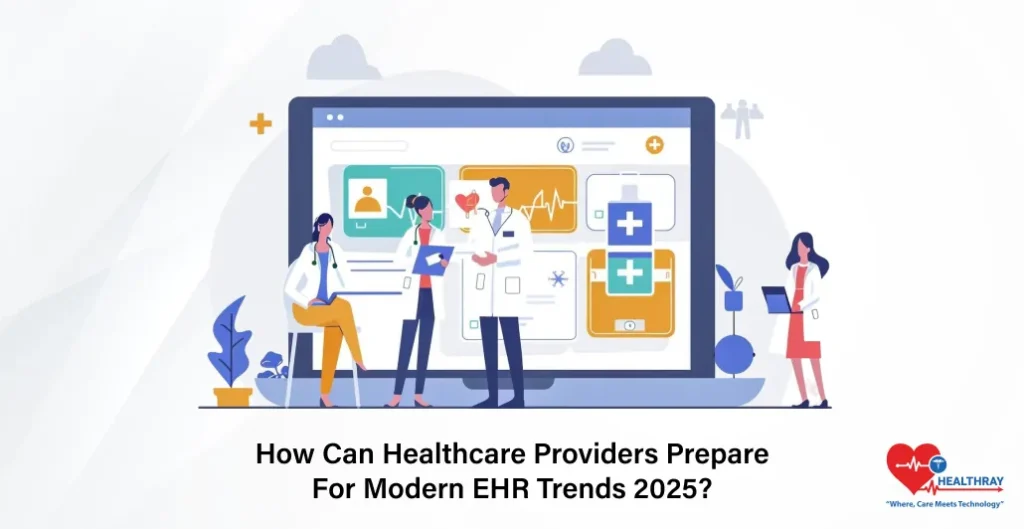
The field of healthcare is rapidly transforming, and, consequently, the modern EHR trends 2025 require us to be ready for this change. In order to anticipate these trends, providers need a path forward. However, unplanned adoption of new technology can lead to slowed care, increased errors, and staff frustration.
Thus, the first step is the training of staff. Health care practitioners and administrative staff need to be trained in the effective use of EHR systems. Moreover, training ought to include education on e-health record systems and digital records, as well as information on patients. Therefore, staff should also go through the practice of using the EHR software for regular activities.
Following this, clinics and hospitals should migrate to the cloud. Indeed, cloud-based electronic health record systems provide improved accessibility, flexibility, and security. With a cloud-based EHR system, mental health professionals can also access and edit notes and care plans from anywhere.
Furthermore, healthcare companies also need to bridge the gap between technology teams and clinicians. While IT staff understand software and security, clinicians know the needs of patients. Thus, they can jointly improve the design of EHR systems. Therefore, regular meetings and feedback loops help with adoption and minimise resistance.
Finally, healthcare providers should remain aware of future innovations. New AI capabilities, predictive analytics, and cloud capabilities are coming out all the time. Staying updated on new EHR softwares and electronic health record systems is important for making sure hospitals are efficient, safe, and patient-centred.
What’s the Future Beyond Modern EHR Trends 2025?
The future of healthcare is bright, as modern EHR trends 2025 open doors to new possibilities. In addition, in the near future, digital twins will probably integrate with electronic health record systems. Consequently, the patient’s health can then be modelled in virtual patients in real time. Thus, clinical interventions may be tested on these virtual patients before being implemented with real patients.
Furthermore, metaverse health records could allow providers to view a patient’s information in a fully immersive three-dimensional setting. Now, picture accessing your electronic patient records as if you were visiting a simulated clinic. This, in turn, could increase the collaboration and understanding of these complex conditions.
Moreover, AI doctors and assistants will be more prevalent. Specifically, they might assess digital health records in real-time, propose therapies, and anticipate dangers. As a result, these AI tools will be embedded in EHR software, resulting in quicker, more intelligent EHRs for mental health practitioners.
In conclusion, by 2030, we will have intelligent, predictive, and connected care. Indeed, AI, IoT, and cloud capabilities will be integrated within electronic health record systems. Thus, health records will be accessible to the patients anywhere. Ultimately, real-time decision-making will be based on predictive analytics by the providers.”
In short, modern EHR trends 2025 predict a smarter, quicker, and more patient-focused healthcare system. EHR technologies, EHR systems, or electronic patient records will support the “new paradigm”.
Conclusion
As modern EHR trends 2025 continue, this evolution has taken the form of “moving the profession from documentation into enhancing patient care”. EHR systems now allow for improved workflow, fewer errors, and possibilities for personalisation of care.
Empowerment is provided to the patients via access to electronic patient records, and the providers, through the use of digital health records and EHR software make more intelligent choices. These features help to enhance the efficiency and security of EHR systems through interoperability, AI, applications in the cloud, and predictive analytics. As time goes on and technology progresses, modern EHR isn’t simply data; it’s saving lives intelligently.
